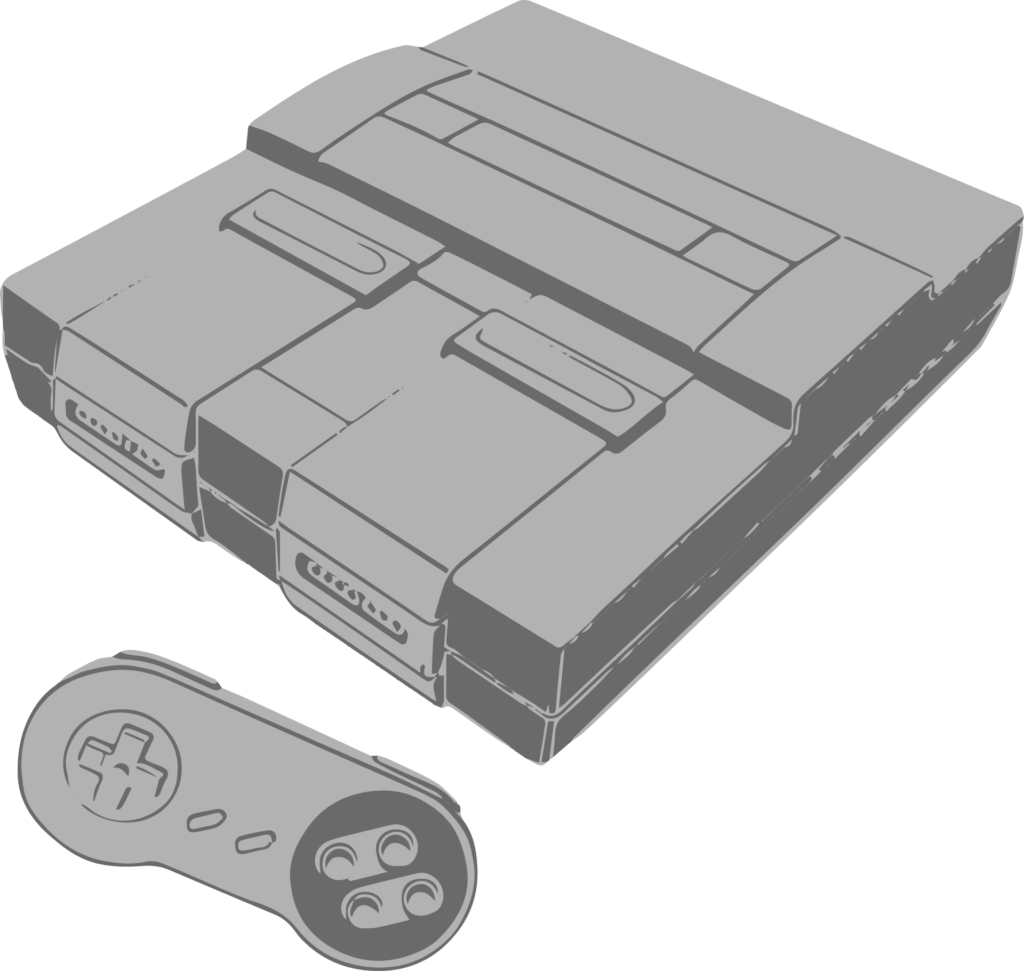
A Classic in Video Games
History of the Super Nintendo
The Super Nintendo Entertainment System (SNES), released by Nintendo in 1990 in Japan as the Super Famicom and in 1991 in North America, is one of the most iconic consoles in video game history. It succeeded the Nintendo Entertainment System (NES) and brought advanced graphics and an impressive game library. The SNES was a milestone in the gaming industry, featuring 16-bit graphics and stereo sound, providing a much richer and more immersive gaming experience compared to previous consoles.
Fun Facts about the Super Nintendo
- Innovative Design: The original design of the Super Famicom in Japan was different from the SNES in North America. The American SNES had a more robust and rectangular look.
- Advanced Video Modes: The SNES introduced Mode 7, a graphics technique that allowed background rotation and scaling, providing a sense of three-dimensional depth in games like “F-Zero” and “Super Mario Kart.”
- Sales Success: The console sold over 49 million units worldwide, making it one of the best-selling consoles of all time.
- Iconic Games: The SNES is known for its vast library of classic games, including titles like “Super Mario World,” “The Legend of Zelda: A Link to the Past,” “Super Metroid,” and “Donkey Kong Country.”
- Super FX Peripheral Support: Some SNES cartridges, like “Star Fox,” included the Super FX chip, allowing advanced three-dimensional graphics for the time.
Technical Specifications
Console Name: Super Famicom / Super Nintendo Entertainment System
Release Date: November 21, 1990 / August 23, 1991
Original Price: ¥25,000 / US$199
Country of Origin: Japan
Manufacturer: Nintendo
Discontinued In: September 25, 2003 /
Main media: ROM cartridge
Units sold: 49.10 million
Number of Games: 1757
Predecessor: Nintendo Entertainment System
Successor: Nintendo 64
Backwards compatibility: n/a
Related to:
- Super Comboy
- SNES Baby
Generation: Fourth generation
Release Dates:
- Japan: November 21, 1990
- North America: August 23, 1991
- Europe: April 11, 1992
Units Sold: Approximately 49 million
CPU: Ricoh 5A22 (Based on WDC 65C816); Speed: 3.58 MHz
RAM: 128 KB
Video:
- Resolution: 256×224 to 512×448 pixels
- Color Palette: 32,768 colors, with up to 256 colors displayed simultaneously
- Sprites: Up to 128 sprites, with 32 sprites per line
Audio:
- Sound Processor: Sony SPC700
- Sound Memory: 64 KB
- Channels: 8 stereo sound channels
Storage: ROM cartridges, with capacities ranging from 512 KB to 4 MB
Controller Ports: 2 ports for standard 7-button controllers
Notable Peripherals: Super Scope, SNES Mouse, Super Game Boy Adapter, Super FX Chip
The Super Nintendo remains a fundamental piece in the history of video games, not only for its technological innovations but also for its lasting influence on gaming culture. Its games continue to be beloved by fans around the world, and the console is frequently revisited by enthusiasts and video game collectors.

 Português do Brasil
Português do Brasil



